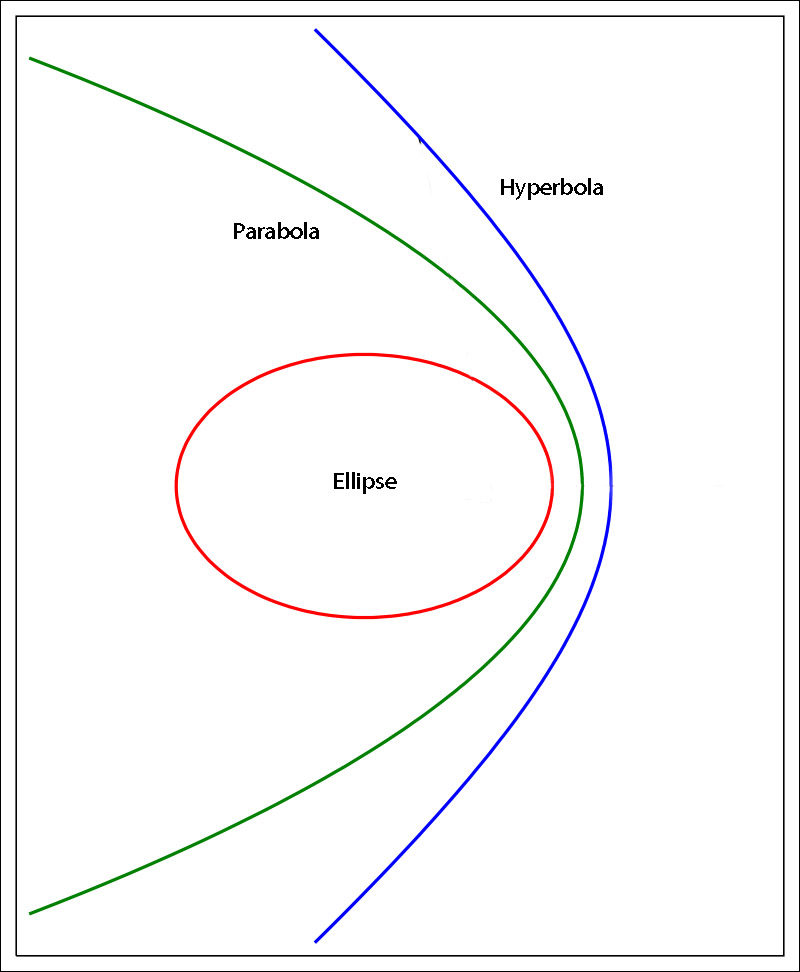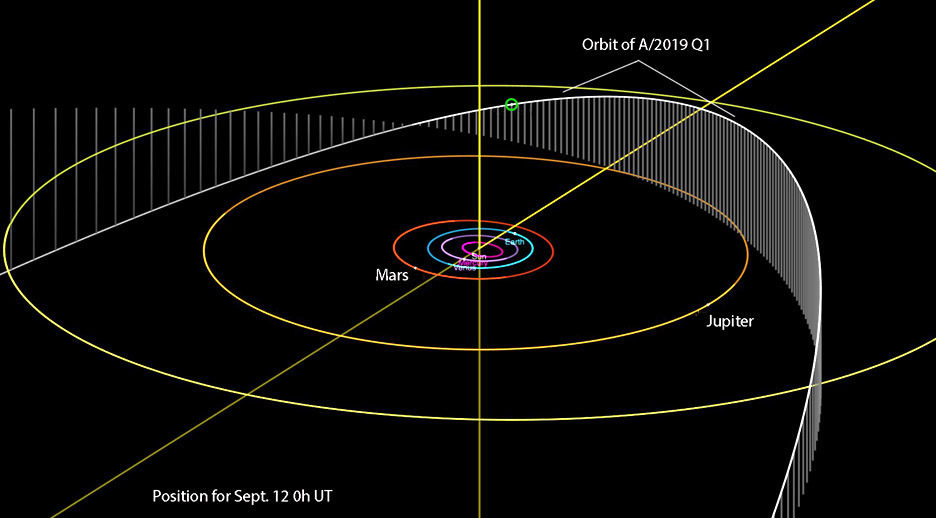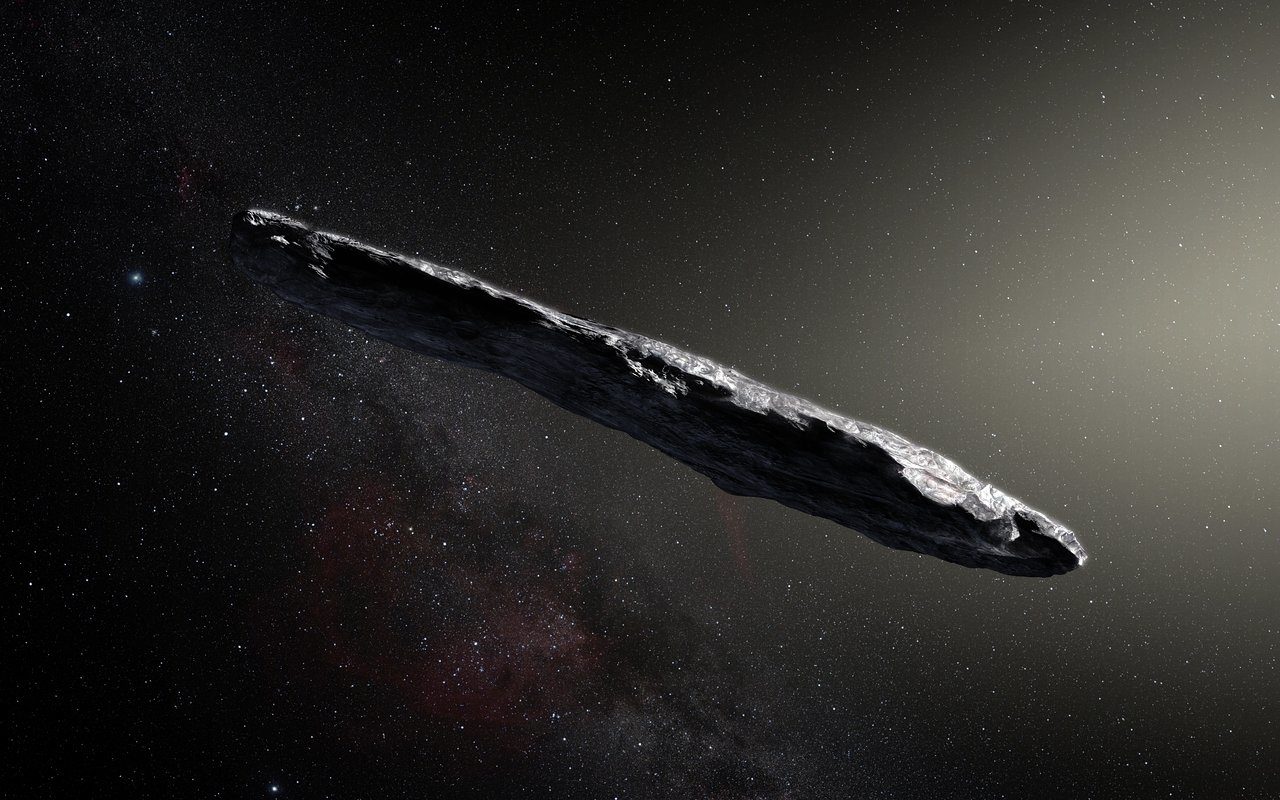First there was 'Oumuamua. Now we might be in store for another interstellar flyby, this time by the recently discovered comet A/2019 Q1. Gennady Borisov captured the object on August 30, 2019, at the Crimean Astrophysical Observatory when it was about 5.5 astronomical units (a.u.) from the Sun. Unlike 'Oumuamua, which was discovered well after perihelion, the new comet is approaching the plane of the solar system and will reach perihelion on July 24, 2020 at a distance of 4.96 a.u., about the distance between Jupiter and the Sun.
But it's still early. Don't be surprised if these dates change as more observations come in.
What sets A/2019 Q1 apart from nearly every other comet is the eccentricity of its orbit. Eccentricity measures how much an orbit deviates from a perfect circle, which has an eccentricity of 0. Elliptical orbits, typical of planets, asteroids and comets, have eccentricities between 0 and 1. Parabolas are equal to 1, and an eccentricity greater than 1 indicates a hyperbolic orbit.

Based on current observations, A/2019 Q1's eccentricity is about 3.2 — definitely hyperbolic. Objects on hyperbolic orbits are unbound to the Sun. They most likely to hail from beyond the solar system, flying in from great distances and pay the neighborhood a brief visit before heading off for parts unknown.
If these results hold up, astronomers have an unprecedented opportunity to study a potentially interstellar object in great detail over a long span of time. Based on the comet's current magnitude (~18) and distance from the Sun (5.5 a.u.), it appears to be a fairly large object.

Assuming the comet's hyperbolic orbital solution holds up, the object appears to be coming from the direction of the galactic plane in Cassiopeia. Tonight (September 11th), the object is located near the border of Pisces and Aries, not far from the popular double star Gamma (γ) Arietis, as it ticks southwest at the rate of about 1.3° every three days.
Whether it becomes visible in amateur telescopes is unknown at this point, but it may become bright enough for astrophotographers to capture. We'll have updates as additional observations and photos arrive. More information about the object can be found on Minor Planet Circular MPEC 2019-R92.




Reader Comments
to our Newsletter